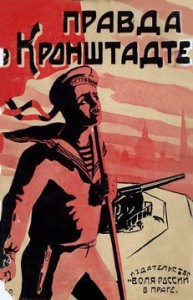1920
February: White army commander Kolchak is captured and executed.
February: The Bolshevik government makes an offer of peace to the US but this is rejected.
March: Yudenich’s White Army is evacuated from Estonia by British shipping.
April: Fighting intensifies in Poland, where the Poles drive back the Red Army and reclaim more territory.
April: White army commander Denikin passes control to General Wrangel and flees Russia via the Black Sea.
June: The autonomous ‘mountain republics’ of Chechnya, Ossetia and Dagestan are overrun by the Red Army.
August: The beginning of the peasant insurrection in Tambov by Antonov’s ‘Blue Army’.
September: The death of Inessa Armand, his confidante and possibly his lover, leaves Lenin stricken with grief.
October: The Treaty of Riga brings most fighting in the Russo-Polish War to a halt.
November: General Wrangel’s White Army, under siege from the Reds in Crimea, evacuates via the Black Sea.
November: Most major fighting in the Civil War is at concluded, though localised skirmishes and peasant uprisings still continue.
1921
January: The Tambov peasant leader, Antonov, now commands a force in excess of 20,000, with which he attacks Bolshevik positions.
January: Alexander Shlyapnikov publishes an article in Pravda, in which he summarises the ideas and perspectives of the Workers’ Opposition.
February 28th: Rebellious sailors in Kronstadt meet, vote to form their own soviet and call for “Soviets without Bolsheviks”. They draw up a 15-point list of demands for the national government and ready themselves to fight against a Red Army incursion.
March: The Tenth Party Congress of the Communist Party. Lenin announces the New Economic Policy (NEP) and demands an end to factionalism in the party.
March: Red Army troops enter the streets of Kronstadt and arrest the last rebel sailors.
March: Britain signs a bilateral trading agreement with Russia; other nations also lift trading blockades.
May: The rebellions in the Tambov are finally suppressed, after a massive injection of Red Army troops into the region.
July: The writer Maxim Gorky makes a worldwide plea for famine aid, declaring millions of Russian lives to be in danger.
August: An American famine relief group agrees to distribute millions of tons of grain in Russia.
February: The Soviet government replaces the CHEKA with a new security agency, the OGPU, which is also headed by Dzerzhinsky.
April: Doctors operate on Lenin’s neck to remove a bullet still lodged there since the August 1918 assassination attempt.
April: Joseph Stalin is appointed General Secretary of the CPSU (Communist Party of the Soviet Union).
May: Lenin suffers the first of several strokes.
December: Lenin proclaims the Union of Soviet Socialist Republics, a federation of all soviet states.
December: Lenin dictates his ‘political testament’, a series of letters containing his views about the future of Soviet Russia, the Communist Party and its potential leaders.
1923
January: The relationship between Lenin and Stalin breaks down after Stalin is rude and insulting to Krupskaya, Lenin’s wife.
March: Lenin suffers a third stroke that leaves him paralysed and barely able to speak.
May: Lenin’s last article, on the development of the Soviet bureaucracy, appears in the communist newspaper Pravda.
May: Lenin is removed to a party sanitorium at Gorki, with Stalin given responsibility for attending to his security, medical needs and well-being.
June: American charitable organisations end famine relief to Russia, after they discover the Soviet government is exporting grain abroad.
July: Two secret factions within the Communist Party, the ‘Workers’ Group’ and ‘Workers’ Truth’, are discovered and purged.
September: A troika of Politburo members – Stalin, Kamenev and Zinoviev – emerges as a controlling faction.
October: The ‘scissors crisis’, a gross difference in between the availability and prices of agricultural and manufactured goods, reaches its peak.
October: In a letter to the Politburo, 46 leading Bolsheviks criticise the growing lack of democracy in the CPSU.
1924
January: Lenin passes away after a fourth severe stroke. He is later embalmed and preserved in a mausoleum in Red Square, while the city of Petrograd is renamed Leningrad in his honour.
February: The USSR is formally recognised by Great Britain and other Commonwealth nations.
© Alpha History 2018-23. Content on this page may not be republished or distributed without permission. For more information please refer to our Terms of Use.
This page was written by Jennifer Llewellyn, John Rae and Steve Thompson. To reference this page, use the following citation:
J. Llewellyn et al, “Russian Revolution timeline 1920-1924” at Alpha History, https://alphahistory.com/russianrevolution/russian-revolution-timeline-1920-1924/, 2018, accessed [date of last access].

